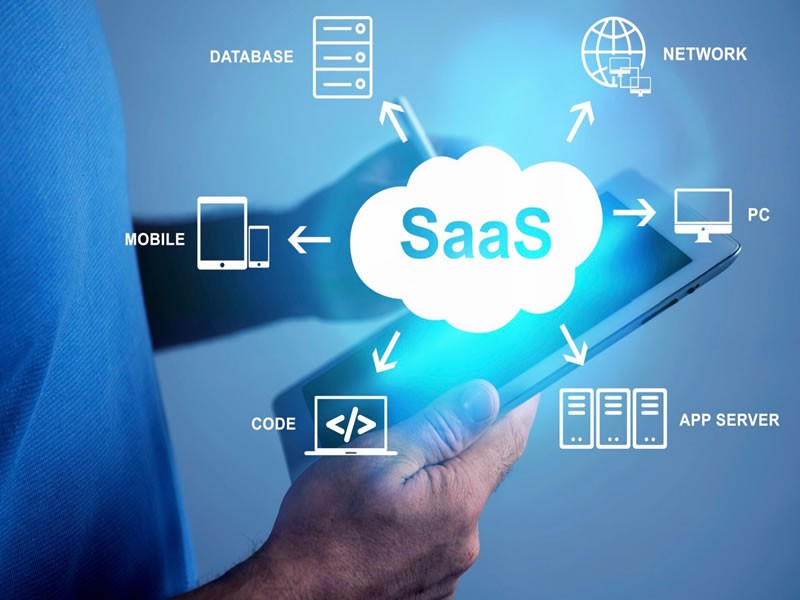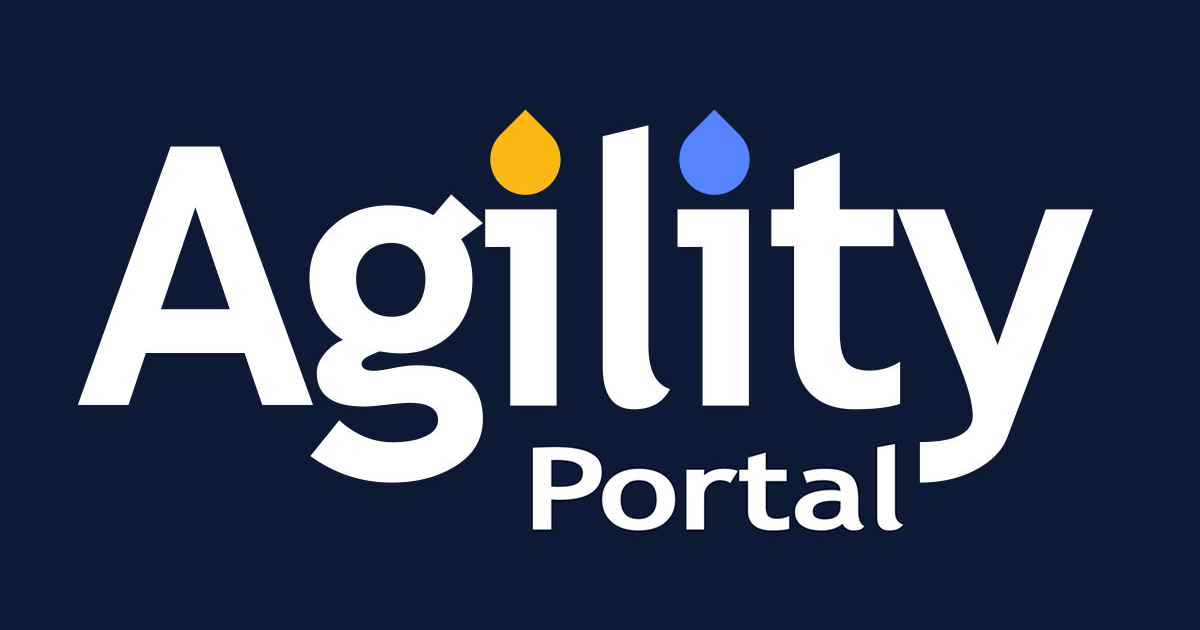Insight Blog
Agility’s perspectives on transforming the employee's experience throughout remote transformation using connected enterprise tools.
18 minutes reading time
(3631 words)
How to migrate business operations to a SaaS cloud platform
In this blog post, we talk about How to migrate business operations to a SaaS cloud platform, what it is saas, and the challenges it bring in 2023.
In this blog post, we talk about How to migrate business operations to a SaaS cloud platform, what it is saas, and the challenges it bring in 2023.
As businesses aim to modernize their IT systems in order to reduce risks and cut expenses, cloud computing and the "as-a-service" model are gaining significant popularity. Within the realm of cloud computing options, Software as a Service (SaaS) stands out as the most favored choice.
Companies that opt for SaaS can sidestep the initial costs and intricacies associated with owning and maintaining their software applications, all while still enjoying access to the latest software versions and features.
SaaS has now expanded to encompass vital business software that plays a central role in managing the operations of many of the world's largest corporations.
To determine whether SaaS migration is the right step for your organization, it's crucial to comprehend what it entails and the reasons behind it, as well as the methods to execute it.
What Is SaaS cloud platform?
Software as a Service (SaaS) stands out as the preferred choice for businesses in the realm of cloud computing.
The primary reason is its remarkable accessibility – a mere internet connection and a web browser suffice. Additionally, SaaS relieves customers of the burden of managing technical intricacies, as this responsibility falls on the shoulders of the vendors, eliminating the need for in-house IT expertise.
As businesses grow more comfortable with cloud operations, SaaS solutions gain increasing popularity. While some end users can independently procure SaaS technology, others may opt for third-party assistance to ensure seamless integration, customization, and enhanced security.
To effectively analyze, assess, and design cloud computing solutions, a foundational understanding of the commonly employed components is essential.
These standard cloud computing services include, What is the difference between IaaS, PaaS, and SaaS in cloud computing:
SaaS extends multiple advantages to organizations, primarily in terms of flexibility and cost savings.
As businesses grow more comfortable with cloud operations, SaaS solutions gain increasing popularity. While some end users can independently procure SaaS technology, others may opt for third-party assistance to ensure seamless integration, customization, and enhanced security.
To effectively analyze, assess, and design cloud computing solutions, a foundational understanding of the commonly employed components is essential.
These standard cloud computing services include, What is the difference between IaaS, PaaS, and SaaS in cloud computing:
- Infrastructure as a Service (IaaS): IaaS provides the underlying infrastructure for computing, storage, and networking. Users can provision and manage these resources on an as-needed basis, without the need to purchase or maintain their own hardware. This can be a cost-effective and scalable solution for organizations that have fluctuating or unpredictable IT needs.
- Platform as a Service (PaaS): PaaS provides a platform for developing, deploying, and managing applications. Users can access the underlying infrastructure, but they do not need to manage it themselves. This can save time and money, and it can also make it easier to develop and deploy applications. Partnering with a reputable saas application development company can further streamline this transition, ensuring that your migration is seamless and tailored to your specific business needsPaaS is often a good choice for organizations that are developing new applications or that want to migrate existing applications to the cloud.
- Software as a Service (SaaS): SaaS provides software that is hosted and managed by the cloud provider. Users can access the software over the internet, and they do not need to install or maintain it themselves. SaaS is a good choice for organizations that want to use software without having to worry about the underlying infrastructure.
SaaS extends multiple advantages to organizations, primarily in terms of flexibility and cost savings.
By entrusting SaaS vendors with the mundane tasks of software installation, management, and updates, employees can direct their efforts toward more pressing priorities.
Continue reading to gain a comprehensive insight into what SaaS entails, the benefits it bestows upon organizations, the potential challenges it may pose, and typical use cases and emerging technologies.
Examples of Software as a Service
Email and messaging applications epitomize the transformative power of SaaS. Widely used software like Google Workspace has revolutionized communication and collaboration, while its cloud-based accessibility has made it indispensable for businesses of all sizes.
While email remains a cornerstone of business communication, messaging apps like AgilityPortal, Slack, and Microsoft Teams are rapidly gaining traction, offering real-time communication and seamless file sharing.
SaaS extends its benefits beyond communication, providing comprehensive solutions for data storage, organization, and maintenance. SaaS tools for marketing automation and customer relationship management (CRM) exemplify how on-demand software empowers businesses to streamline operations, enhance customer engagement, and achieve their objectives.
SaaS has democratized access to sophisticated software, catering to a diverse range of users. Individuals seeking affordable or even free online applications can reap the benefits of SaaS, while larger enterprise companies can seamlessly integrate SaaS solutions into various business departments.
In the 2021 Harvey Nash Group Technology and Talent Study, 73% of 1,724 technology experts hailing from 69 different countries highlighted that SaaS applications are deemed the most crucial technology for achieving success in business.
Prominent examples of Software as a Service include Google Workspace (Apps), Dropbox, Salesforce, SAP Concur, and Zoom, each offering a unique suite of tools tailored to specific business needs.
Challenges of SaaS
As expected, the primary benefit of adopting Software as a Service (SaaS) is intrinsically linked to its foremost challenge: the necessity for a consistent internet connection.
Having a robust and reliable connection is undoubtedly an advantage, but the absence of a dependable connection can quickly turn this advantage into a drawback.
Fortunately, the landscape is evolving with the growing prevalence of broadband and high-speed networks, including the advent of 5G technology. These advancements are progressively mitigating the connectivity issue associated with SaaS.
However, prospective SaaS users should weigh a few other scenarios before making the decision to embrace a SaaS solution.
Potential Drawbacks of SaaS
While SaaS offers numerous advantages, it's essential to consider potential drawbacks before adopting this software delivery model:
- Vendor Dependence: SaaS companies rely heavily on the vendor's infrastructure and expertise, raising concerns about control over data and application functionality.
- Limited Customization: SaaS applications often provide restricted customization options, potentially hindering the alignment with specific business requirements.
- Potential Latency Issues: SaaS applications may exhibit slower performance compared to traditional client/server setups, especially in areas with limited internet bandwidth.
- Security Considerations: While SaaS providers implement security measures, safeguarding sensitive data requires careful evaluation of the provider's security posture and implementation of additional safeguards.
For more info on Drawbacks of SaaS, read our article about: Don't Fall for These 8 SaaS Myths
Follow us and access great exclusive content everyday: Follow us on Google News
What is SaaS Migration?
SaaS migration is the process of seamlessly transferring software applications from on-premises servers to a cloud-based delivery model. It encompasses the entire business cycle, from the hosting and management of applications to their ultimate delivery.
With SaaS migration, organizations delegate the responsibilities of hardware maintenance, regular updates, and infrastructure scalability to the SaaS provider.
In order to stay in tune with evolving business trends, SaaS migration offers a wide array of advantages, which include:
- Enhanced Scalability: SaaS applications can be effortlessly adjusted to match fluctuating business requirements, eliminating the necessity for organizations to invest in additional infrastructure.
- Reduced IT Costs: By shifting IT management tasks to the SaaS provider, organizations can significantly reduce their IT overhead expenses.
- Improved Accessibility: SaaS applications can be accessed from anywhere with an internet connection, empowering employees to work remotely and collaborate efficiently.
- Increased Agility: SaaS providers consistently update their applications, ensuring that organizations constantly have access to the latest features and functionalities.
- Enhanced Security: SaaS providers implement robust security measures to protect data and applications, thereby reducing the risk of cyberattacks.
By embracing SaaS migration, organizations can enjoy these benefits and gain a competitive edge in today's ever-changing business landscape.
Why Migrate to SaaS Business Model?
Migrating to a Software as a Service (SaaS) business model can offer several compelling advantages for both software providers and their customers. Here are some key reasons why businesses consider making this transition:
- Recurring Revenue: One of the most significant benefits of SaaS is the recurring subscription-based revenue model. Instead of relying on one-time software sales, SaaS companies receive a steady stream of income from subscribers. This predictable revenue stream makes financial planning and stability easier to achieve.
- Lower Entry Costs: Traditional software often involves high upfront costs for customers, which can be a barrier to adoption. SaaS typically offers lower entry costs, making it more accessible to a broader audience. Customers pay on a monthly or annual basis, which can be more manageable than a significant upfront investment.
- Automatic Updates and Maintenance: SaaS providers are responsible for maintaining and updating the software, which reduces the burden on customers. This ensures that customers always have access to the latest features and security patches without the need for manual installations or updates.
- Scalability: SaaS solutions are often designed to be easily scalable. As a customer's needs grow, they can easily upgrade their subscription to access more features, storage, or users. This flexibility is a significant advantage for businesses experiencing growth.
- Accessibility and Convenience: SaaS applications are typically cloud-based, allowing users to access them from any device with an internet connection. This accessibility and convenience make it easier for users to work from various locations and devices, fostering collaboration and remote work.
- Reduced IT Burden: SaaS providers handle the infrastructure, server management, and technical support, relieving customers of these responsibilities. This can lead to cost savings and allow businesses to focus on their core operations rather than IT maintenance.
- Data Security and Compliance: Many SaaS providers invest in robust security measures, including data encryption, access controls, and compliance certifications. This can be particularly important for businesses that handle sensitive or regulated data.
- Analytics and Insights: SaaS applications often come with built-in analytics and reporting capabilities, providing users with valuable insights into their data and operations. This can help businesses make data-driven decisions and improve their efficiency.
- Global Reach: SaaS solutions can be easily distributed and accessed globally. This allows businesses to expand their customer base beyond their geographical location and tap into new markets.
- Trial and Flexibility: SaaS providers frequently offer trial periods or free versions of their software, allowing potential customers to test the product before committing. This flexibility can make it easier for businesses to find the right solution for their needs.
- Evolving Business Models: The SaaS model is highly adaptable, allowing companies to experiment with pricing structures, package offerings, and feature sets to find the most profitable approach. This flexibility can help businesses stay competitive and agile in a dynamic market.
While the migration to a SaaS business model has many advantages, it's important to note that it may not be suitable for all types of software or industries. AI Use Cases for SaaS Products: Benefits and Examples
Businesses considering this transition should carefully evaluate their target market, competition, and product offering to determine if SaaS is the right fit for their unique circumstances.
How to start your saas migration strategy
What is saas migration? Migrating to a Software as a Service (SaaS) model is a strategic decision for many organizations looking to modernize their software infrastructure and leverage the benefits of cloud computing.
A well-planned SaaS migration strategy is essential to ensure a smooth and successful transition.
Here are four saas migration steps outlining a comprehensive SaaS migration strategy:
- Assessment and Planning: The first step in any SaaS migration strategy is to assess your current software landscape and business needs. Identify the applications that are suitable for migration and those that may need modification or replacement. Determine your organization's objectives, such as cost reduction, scalability, or improved collaboration. A SaaS procurement guide can help you navigate this process by ensuring that you're selecting the right tools for your specific needs. Create a detailed migration plan that outlines timelines, budgets, and key performance indicators. It's important to involve stakeholders from different departments to ensure that the migration aligns with the organization's goals.
- Vendor Selection: Choosing the right SaaS vendor is a critical decision in your migration strategy. Research and evaluate potential vendors based on factors like reliability, security, scalability, and the alignment of their services with your needs. Consider factors like data residency, compliance, and integration capabilities. Conduct proof-of-concept tests or pilots to ensure the chosen SaaS solution meets your expectations. Negotiate terms and conditions that protect your organization's interests and establish a clear Service Level Agreement (SLA) with the vendor to define expectations regarding performance, uptime, and support.
- Data Migration and Integration: Saas data migration, or data is the lifeblood of any organization, so ensuring a smooth data migration is paramount. Plan the migration of your data carefully, taking into account the data structure, format, and any necessary data cleansing or transformation. Establish robust data backup and recovery procedures to mitigate the risk of data loss during migration. Additionally, consider how the new SaaS applications will integrate with existing systems, both on-premises and other cloud services. Utilize middleware solutions or APIs to facilitate seamless data flow between applications.
- Training and Change Management: A successful SaaS migration is not just about the technology; it also involves people and processes. Provide adequate training to employees to ensure they are proficient in using the new SaaS applications. Develop a change management plan to address resistance and ensure a smooth transition. Communicate the benefits of the migration to the workforce and involve key personnel in the decision-making process. Monitor the post-migration performance and continuously optimize your SaaS setup to maximize its benefits.
How to Migrate a Traditional App to SaaS?
Migrating to a SaaS model involves a structured process that commences with strategic planning.
Let's explore the additional stages for transitioning from a legacy system to a SaaS application:
- SaaS Migration Roadmap The journey toward adopting the SaaS model begins with the creation of a strategic roadmap. This initial step necessitates in-depth research and an evaluation of the current infrastructure and application capabilities. Subject matter experts use these insights to formulate a roadmap that aligns with the organization's vision, incorporating strategies tailored to their specific needs.
- SaaS Design and Development Building upon the roadmap, organizations move forward to decide whether their application requires a complete or partial redesign or redevelopment to align with SaaS migration objectives. Several critical factors come into play during this phase, including cross-functionality, scalability, security, and other cloud-based features. The primary goal remains to leverage existing best practices and minimize adjustments to the SaaS cloud application.
- Evaluation and Feedback This phase is pivotal in determining the success of the SaaS migration. Businesses actively gather feedback from stakeholders and potential users. This feedback serves as a foundation for refining the SaaS application to ensure it meets and exceeds client expectations.
- Testing Rigorous testing is the cornerstone of this stage, ensuring the proper functioning of the application. Certified testers meticulously assess compatibility, integrations, security, performance, and the overall user experience.
- Data Migration Process Once the application successfully clears the testing and analysis phase, it's time to deploy the SaaS application on the cloud infrastructure.
By following these well-defined steps, businesses can seamlessly transition their legacy systems to a SaaS model. Simultaneously, they unlock the advantages of scalability, flexibility, and cost-effectiveness, enhancing their overall business operations.
How to migrate business operations to a SaaS cloud platform
Migrating your business operations to a Software as a Service (SaaS) cloud platform can offer numerous benefits, including cost savings, scalability, and accessibility. However, it's a complex process that requires careful planning and execution. Here are the steps to help you successfully migrate your business operations to a SaaS cloud platform:
- Assessment and Planning:
- Define Your Objectives: Clearly define what you aim to achieve with the migration, whether it's reducing costs, improving efficiency, or enhancing collaboration.
- Assess Your Current Environment: Evaluate your existing systems, data, and processes to identify what can be migrated to the SaaS platform and what needs modification or replacement.
- Selecting the Right SaaS Provider:
- Research and Compare: Explore different SaaS providers and choose one that aligns with your business needs, offers the required features, and has a good track record for security and reliability.
- Data Security and Compliance: Ensure the SaaS provider complies with the necessary data security and industry-specific regulations relevant to your business.
- Data Migration:
- Data Cleanup: Clean and de-duplicate data before migrating to ensure data quality.
- Data Mapping: Map your existing data structure to the format required by the SaaS platform.
- Data Backup: Always have a backup of your data before initiating the migration.
- Customization and Integration:
- Customization: Configure the SaaS platform to match your business processes and requirements.
- Integration: Integrate the SaaS platform with other applications and systems used in your organization, such as CRM, ERP, or accounting software.
- Testing:
- Perform thorough testing to ensure that all data and processes function correctly on the SaaS platform. Identify and resolve any issues.
- Training and Change Management:
- Provide training to your staff to familiarize them with the new SaaS platform and its features.
- Implement change management strategies to ease the transition and encourage adoption.
- Rollout and Deployment:
- Gradual Transition: Depending on the complexity, consider a phased rollout to minimize disruption.
- Monitor the rollout closely and address any issues that arise promptly.
- Post-Migration Optimization:
- Continuously monitor the performance and functionality of the SaaS platform.
- Collect feedback from users and make necessary adjustments and improvements.
- Data Security and Compliance:
- Regularly update and maintain security measures to protect your data.
- Ensure ongoing compliance with relevant regulations.
- Backup and Disaster Recovery:
- Implement robust backup and disaster recovery procedures to safeguard your data in case of unexpected incidents.
- Cost Management:
- Continuously evaluate and optimize your SaaS usage to manage costs effectively.
- Documentation:
- Maintain comprehensive documentation of the migration process, configurations, and changes for future reference.
- Support and Maintenance:
- Ensure you have access to reliable support from the SaaS provider and a team that can address any technical issues or concerns.
- Feedback and Evaluation:
- Collect feedback from your team to identify areas for improvement and potential enhancements.
Migrating to a SaaS cloud platform is a significant undertaking, and it's crucial to plan meticulously, execute with care, and remain adaptable throughout the process.
Depending on the complexity of your operations, consider involving experienced IT professionals or consultants to ensure a smooth transition.
Which benefit does SaaS security provide?
Businesses that prioritize security and compliance can significantly benefit from adopting applications designed with security in mind from the outset to ongoing security monitoring across various environments. SaaS (Software as a Service) applications offer inherent security benefits, including:
- Continuous Monitoring: SaaS providers employ dedicated security teams that continuously monitor applications for potential attacks, events, and security threats, ensuring around-the-clock security incident management and response.
- Automated Security: SaaS providers have embraced DevSecOps principles, integrating security automation throughout the software development, release, and operational processes. They leverage advanced automation to maintain consistency and impact, often challenging to replicate in on-premises application environments. This stems from the difficulty of gathering and incorporating feedback at scale and disseminating relevant information to development teams in on-premises setups.
- Native Detection and Remediation: SaaS cloud providers continuously scan and monitor runtime environments for potential risks, vulnerabilities, and configuration discrepancies. Through security controls and infrastructure automation, SaaS cloud providers can swiftly and automatically respond to and remediate issues, thanks to their well-defined and consistent environments. Achieving similar results in an individual on-premises application deployment can be considerably more challenging.
- Modern Infrastructure: SaaS cloud providers utilize the latest hardware, platform technologies, and infrastructure, often difficult to obtain in on-premises environments due to budget constraints, depreciation concerns, and supply chain limitations. By harnessing cutting-edge security features inherent to native cloud hardware platforms, SaaS applications benefit from robust software and hardware stacks that are typically expensive and challenging to procure and deploy in individual on-premises data centers.
- Specialized Staff: SaaS cloud providers maintain dedicated DevSecOps personnel with specialized expertise available globally, covering all aspects of the application lifecycle. Having access to highly skilled and experienced cybersecurity staff addresses the ongoing talent shortage and skill limitations that many businesses have struggled to navigate in recent years. Given the ever-evolving security landscape, the need for continuously trained experts across all aspects of the security DevSecOps application environment constitutes a significant investment.
- Continuous Audits: SaaS cloud providers must consistently undergo, complete, and make public their compliance status with various global, national, regional, and industry regulations. This approach delivers substantial cost savings and risk reduction compared to the complex and resource-intensive task of performing similar functions for each application in an on-premises environment on a customer-by-customer basis.
- Economy of Scale: SaaS providers benefit from a broader perspective, thanks to their extensive customer base, which allows them to delve deeper into the security landscape as they are the creators of the software. This broadens their capabilities for detecting and mitigating threats. Their ability to support a large number of customers justifies the substantial investment in technology and skills, granting them an economy of scale typically associated with cloud services provision.
You may also like: Best Apps for Employees: UPDATED 2022 – A Complete Guide
The Future of SaaS
The demand for cloud computing is set to surge in the coming years, driven by the need for companies to develop and implement new technologies.
Some experts predict a resurgence of SaaS technology with a strong focus on mobile compatibility, while others envision artificial intelligence (AI) taking a central role in the SaaS market, especially in sectors like logistics, transportation, and retail.
As technology progresses, SaaS models will evolve in tandem. However, the need for off-the-shelf solutions in the business world will persist. Overall, SaaS offers a wide array of advantages that benefit both providers and users.Businesses will continue to rely on skilled IT professionals to assess, evaluate, and design cloud computing solutions that align with their current and future requirements.
Free ebook: How To Get Your Intranet Off The Ground
Categories
Blog
(2600)
Business Management
(319)
Employee Engagement
(207)
Digital Transformation
(173)
Intranets
(119)
Growth
(118)
Remote Work
(61)
Sales
(48)
Collaboration
(37)
Culture
(29)
Project management
(29)
Customer Experience
(26)
Knowledge Management
(21)
Leadership
(20)
Comparisons
(5)
Ready to learn more? 👍
One platform to optimize, manage and track all of your teams. Your new digital workplace is a click away. 🚀
Free for 14 days, no credit card required.















